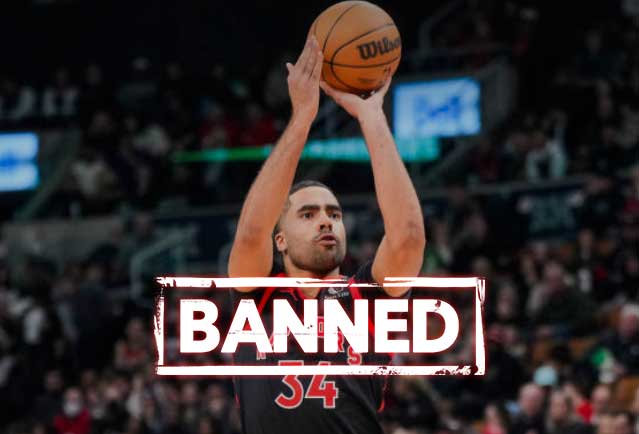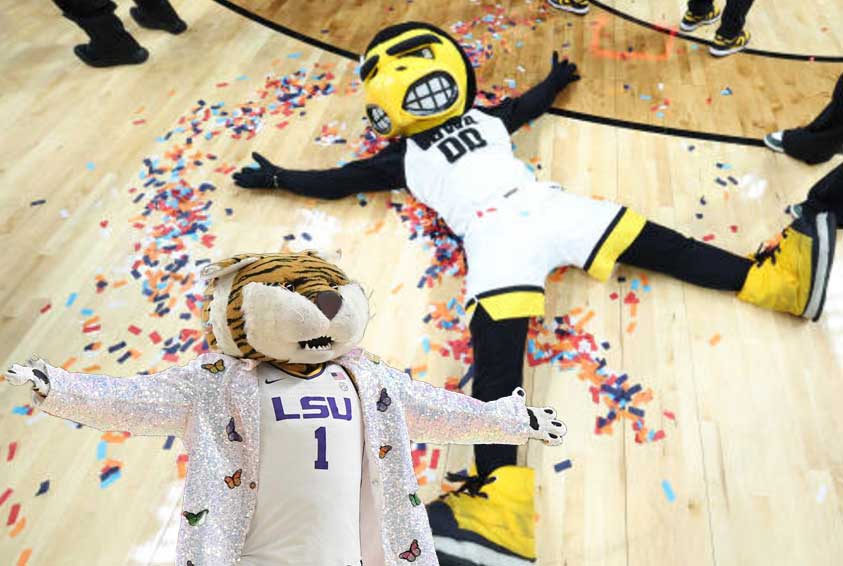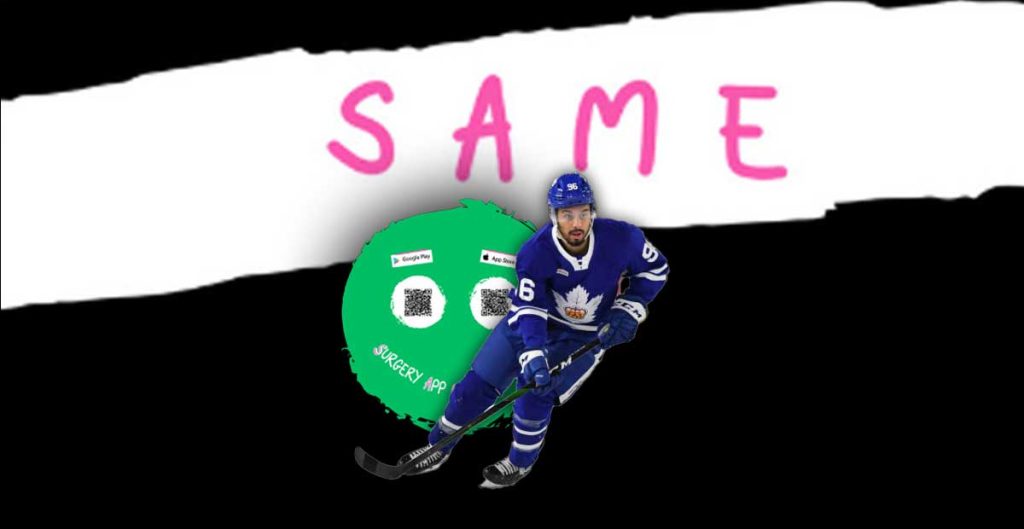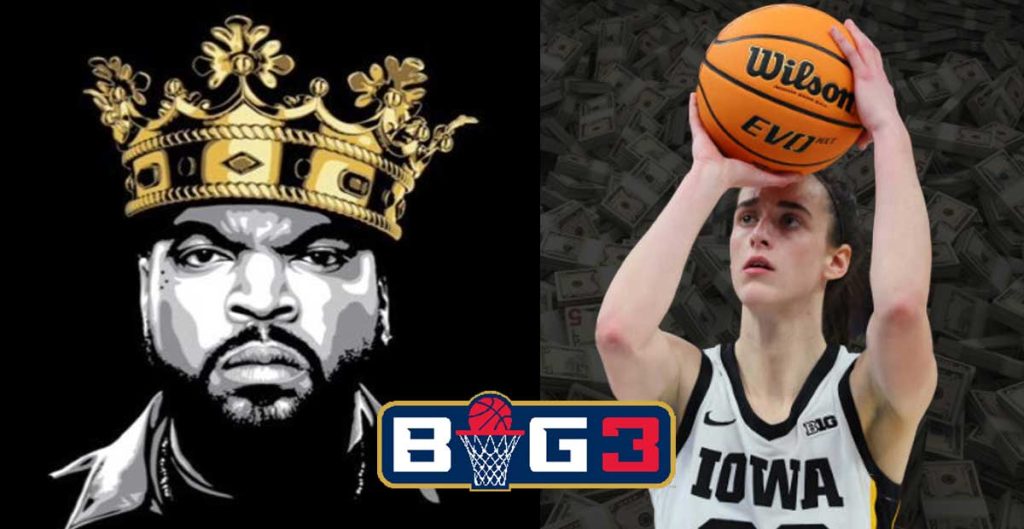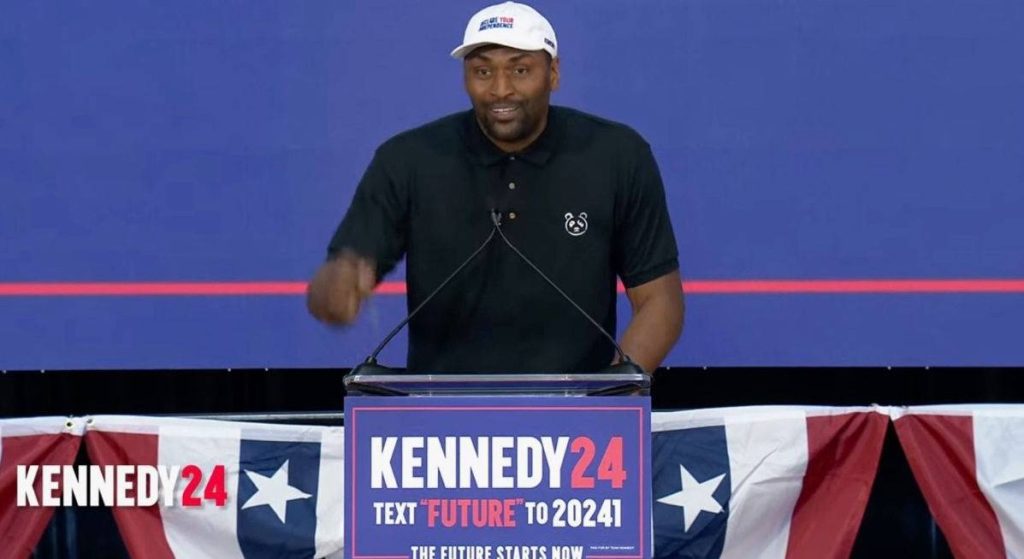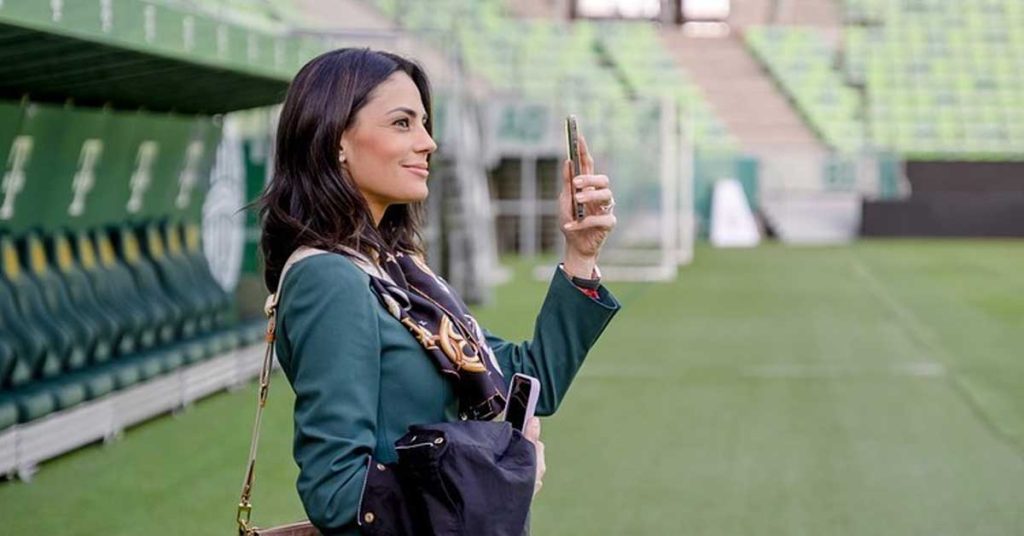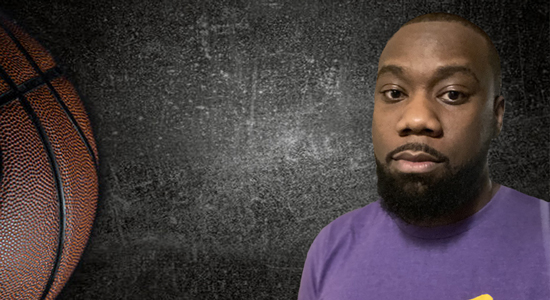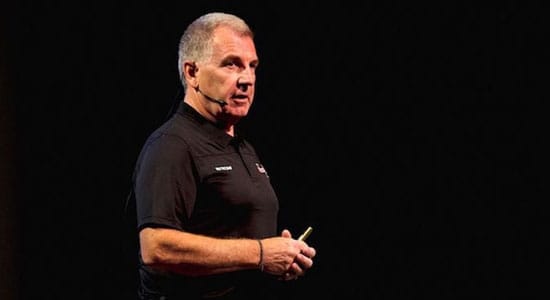
1 on 1 with Paul Carson | Vice President, Hockey Development | Hockey Canada

The youth sport landscape is a very complex environment and many organizations play an important role ensuring youth sports like hockey are accessible, equitable and will provide all future and current participants with the opportunity to become a part of the sport and have an enjoyable experience.
Paul Carson
Vice President, Hockey Development
Hockey Canada
The Latest
Jontay Porter Banned From The NBA For Life
Iowa vs LSU: A Landmark Moment in Women’s College Basketball
Former NHLer Josh Ho-Sang Now A Rapper
Metta World Peace Endorses RFK Jr. for President 2024
1Tell us about your role as Vice President of Hockey Development for Hockey Canada. What does a typical day look like for you?
As vice president of Hockey Development with Hockey Canada, I serve as a contributing member of the Senior Leadership Team and ensure the Hockey Development department meets the operational expectations of all organizational processes. This includes the supervision of all department work plans and tracking the completion of all measurable programming objectives for all department staff.
Hockey Canada is a national sport organization (NSO) that oversees and supports the activities of the provincial sport organizations (PSO) and together with the Vice President of Member Engagement we work to strengthen Member relationships and ensure a level of accountability for implementation of development programs and initiatives in a consistent manner across the country.
I lead staff that are responsible for the implementation of the Hockey Canada eLearning platform designed to provide educational support for adult leaders in coaching, officiating and safety programs. Our staff also considers the future needs of volunteers in the grassroots hockey system and is constantly reviewing program resources to improve upon or build additional resources in the Coaching and Officiating programs.
On a daily basis, I facilitate the linkage between Hockey Development and other Hockey Canada departments like Business Development, Men’s and Women’s High-Performance, and Domestic and International Events on joint initiatives that support player development and performance excellence.
Every day is different and there are so many projects and initiatives being worked on by the Hockey Development department. The key is to monitor all the development plans closely to ensure that projects and initiatives are on track and are trending in a manner that ensures these projects and initiatives are delivered on time, on budget and will have a positive impact on the grassroots hockey system.
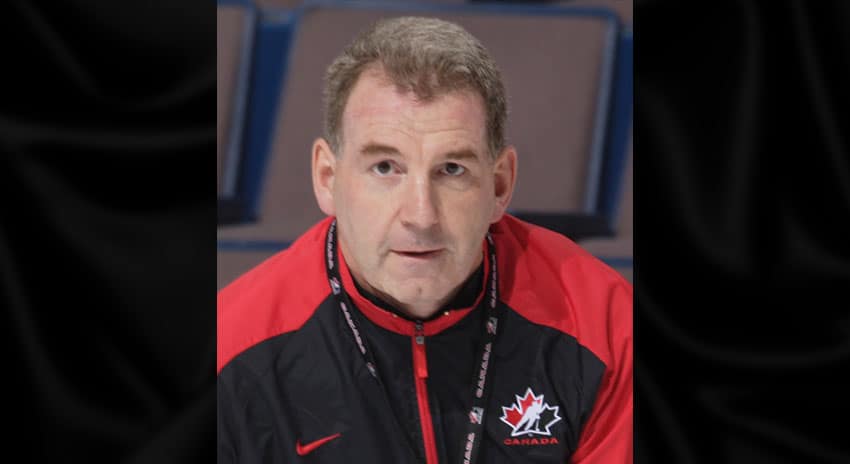
2I noticed you’re also the Chairman of the Board for the Coaching Association of Canada. Tell us about this role and how you find balance between the CAC and Hockey Canada.
The Coaching Association of Canada along with a wide variety of partner organizations are stewards of nation-wide standards and ethics in coach education and development. The CAC believes everyone in Canada should be encouraged to express themselves through physical activity, regardless of age, gender, or ability. Simply stated the CAC vision is “to inspire a nation through sport”. As an organization responsible for coaching leadership in Canada the CAC “strives to enhance the experiences of all athletes and participants in Canada through quality coaching”.
I very much enjoy my leadership role with the Board of Directors. As an experienced sport administrator, I have the opportunity to bring sound experience and perspective to the Board meetings along with 14 other colleagues who have a wide varied of expertise in the Canadian sport system. The Board is a diverse group of very talented individuals who focus on organizational policy leaving the organization’s operational excellence to a very talented CEO, leadership team and qualified staff.
The CAC board contributes to the organization through its unique role of stewardship and ensuring proper governance. To distinguish between the board’s own unique job and that of the CEO, the board concentrates its efforts on providing strategic leadership to partners and stakeholders. The Board is responsible for establishing a strategic plan that sets out the organization’s mission, vision, values, and strategic priorities and monitoring progress against measurable goals.
3One of the facets of your role is to supervise grassroots programming, encouraging an interest in hockey. What strategies do you and your team use to ensure Canadian youth and especially, minority groups (i.e., women’s hockey, newcomers to Canada, etc.), are getting and staying involved with the sport?
Hockey is woven into the fabric of Canadian culture and I believe it is important to bring the game and the opportunity to every Canadian family, whether generational Canadians or families new to Canada. Hockey Canada and our numerous partners have been very creative in the design and delivery of programs to create access to the game.
First and foremost, we work with wonderful organizations and agencies like Jumpstart, KidSport, and numerous groups across Canada to provide families with resources like equipment and finances to get involved in the game. Many minor hockey associations across Canada also have programs in place to provide families with a soft entry into hockey. There is often a lot of negative attention focused on cost, safety, time commitment, and lack of enjoyment when in fact a number of programs address these concerns and create positive environments for young girls and boys and their families to have a terrific experience in hockey.
There is the concern that families may not be able to afford a hockey experience for their child. There is also the concern that children (particularly young girls) will drop out of organized sport by the time they are 13 years old. So, it is important to focus on both recruitment of families to the game and the retention of young players who are at a statistical risk of leaving hockey by the time they are 13 years old.
The youth sport landscape is a very complex environment and many organizations play an important role ensuring youth sports like hockey are accessible, equitable and will provide all future and current participants with the opportunity to become a part of the sport and have an enjoyable experience.
There are many examples, but I would like to focus on two long standing programs to illustrate the work that has been done and continues to provide opportunities for families to entry their children into hockey.
The ESSO Fun Days Program has a rich 20-year history of providing young girls with a hockey experience. Having young girls step on the ice under the leadership and guidance of female instructors – who serve as coaches and role models has attracted literally thousands of young girls to hockey. There have been members of Canada’s National Women’s Hockey Team whose roots trace back to their first experience attending an ESSO Fun Days Event.
The second program worth highlighting involves a strong partnership with Bauer, the National Hockey League, and the NHL Players Association. This program is called the First Shift. Each year, the program is offered by minor and female hockey associations across Canada. Registered participants receive all of their equipment and well-led ice sessions that help young players between the ages of 6 and 10 years old to enjoy a ‘soft entry’ into the game. If these young participants wish to continue in the sport, the program leads direct them through the registration process to become members of their local minor and/or female hockey associations.
In the end, it is clear that families need access to the game, and in some cases (but not all) financial support to at least try the game. Hockey Canada has been very encouraged with the success of these programs and many other programs being offered by numerous not-for-profit groups who also believe in the positive values youth hockey has to offer to young players and their families.
4You were quite instrumental in the development of the Hockey Canada Skills Academy Program! Can you explain a little more about the goals of this program and how it was created? Moreover, do you think a similar program would work for other organizations in Canada?
The Hockey Canada Skills Academy Program was developed right after the completion of the 1999 Molson Open Ice Summit on Player Development. There were 11 major recommendations that were a result of the summit event. Many are still very much a part of the grassroots system today, but the HCSA Program has definitely been an extremely successful initiative.
In the early stages of developing the HCSA Program, the goal was to give players an additional avenue for skill development. At the time, it was believed that arenas all across Canada sat empty during the school day. And one way to offer enhanced skill development would be to work in partnership with the education system to create a model that would allow players to complete a hockey program during the school day that was being offered as a ‘for credit’ course.
The program is now 20 years old and there are a few schools that have been a part of the HCSA network for almost the entire time. The first phase of this concept was the establishment of the ‘HCSA Pilot Project’. The purpose of this Pilot Project was to test the operational mandate of the HCSA Program in the province of Alberta during the 2000-2001 school year. Phase 1 was a resounding success. Phase 2 of the HCSA program was the expansion of the operational mandate to further test and evaluate Hockey Canada’s HCSA program licensing model by expanding the concept regionally throughout Canada.
Today, the HCSA Program operates in over 150 schools in eight provinces across Canada, enhancing the educational experience of over 5,500 students across the country. Hockey Canada’s long-range vision for the HCSA Program is to work closely with its 13 Member Branches in an effort to sanction, service, and monitor HCSA licensed programs operating in rural and urban centers throughout Canada where both local hockey associations and arena facilities are available.
Today the purpose of the HCSA Program is to enhance a hockey student’s confidence, self-esteem, and opportunities in both academics and athletics beyond the primary, intermediate, and secondary school system all while making efficient use of arena facilities during school day hours.
The intention of the HCSA Program is not to develop future professional or international caliber athletes but rather to deliver individual technical skill development to students currently playing hockey while also offering the chance for all students to try hockey at an affordable rate in a school setting. The primary objective of the HCSA Program is to enhance the educational experience of each student by integrating hockey into their school day.
I do believe the operational framework that is in place for the HCSA program could be very beneficial for other sports to explore. Hockey Canada is very open to sharing the experience we have had with the design and ongoing development of the program.
5You’ve been in your current role with Hockey Canada for almost 20 years – Since the onset of your career, how have you seen the game of hockey change within this time?
There have been so many changes in the game over the past 20 years. But my career with Hockey Canada started in 1986 when I became a part of the coaching committee, as a volunteer, that was charged with re-writing the Coach Education Program. So, I am in a good position to talk about the changes I have witnessed over the past 35 years.
Coach Education was probably the biggest change to the game in recent history. After the 1972 Summit Series, the Canadian Government commissioned a study in an effort to better understand the hockey landscape in Canada and why the ‘best players in the world’ (Canadian NHL players) were not as dominate on the international stage as Canadians assumed, we should be.
This resulted in the introduction of coach training and education designed to improve the development experience of players in the Canadian system. Over the past 50 years, there have been a number of revisions to the materials for coach education and training. More coaches per team and better training of coaches led to a number of improvements in the way the game is played and the skill level of the players.
More recently, the introduction of ‘skills coaches’ and the training of these individuals has led to an even greater improvement in player skills. Specialized coaching for goaltenders and skills coaches focusing on developing defenders, improving skating skills, puck control skills, and goal scoring have all contributed to the improvement of player skills.
In addition to on-ice improvements, specialized off-ice coaching in the areas of strength and conditioning has focused on ways to improve player abilities by engaging in programing designed to address improved levels of player fitness. A number of skills can also be worked on off-ice including puck control, shooting, passing and receiving.
So many areas of athlete development contribute to today’s generation of players. Things like mental training, fitness and nutrition, and technologies that support all of these areas continue to provide coaches and players with tools to perform at much higher levels than previous generations.
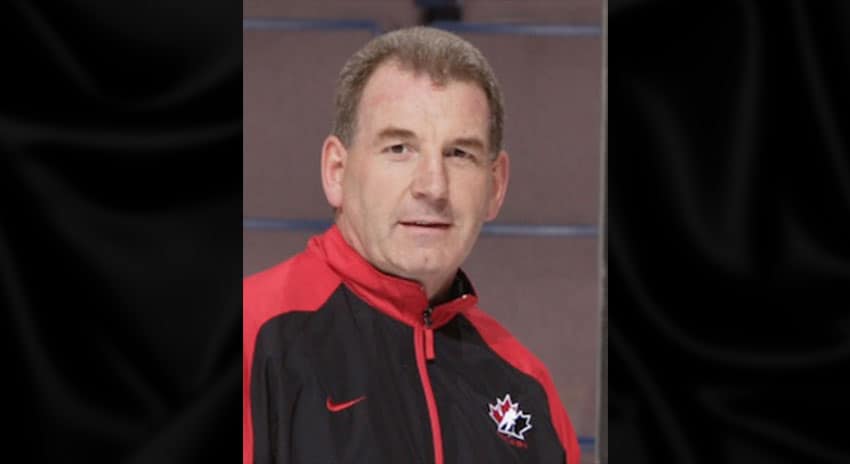
6Hockey is an evolving game. Now looking forward, how do you see the game changing in years to come and how are you positioning yourself to adapt to these changes?
Before suggesting what changes are coming and what will impact on these changes, I would like to think that two things will have a significant impact on the game in the future.
One is the number of girls and women playing the game. More and more young girls are drawn to the game today and there is a need to ensure that female role models will continue to support and encourage young girls to join hockey and stay in hockey as a lifelong pursuit. Hockey is for everyone and for all skill levels so it will be really exciting to see the number of female participants grow and stay in the game long term to enjoy all the benefits the sport has to offer.
The second key change would be to ensure the game is more accessible and inclusive. The diverse nature of Canada’s population is what makes this country a great place to live and to call home. The diversity of Canadian communities needs to be reflected in the make-up of the participants in the game. The future of the game should reflect the diversity of Canadian communities.
Technology continues to have a huge impact on the way the game is changing. It’s a deep topic because it involves the technologies that support the ongoing development of equipment like skates, sticks, and light weight player protective equipment.
Other changes in technology include video analysis software that is so easy to use, skills coaches can record players performing skills and provide immediate feedback and analysis – and give the players visual examples while skills are being practiced.
As I mentioned, skills coaches have had a tremendous impact on player development. This field continues to evolve on a daily basis. Skills coaches are very adept in the use of technologies to support the skills sessions, but they also use social media as a sharing tool so that all coaches can continue to network with one another and support one another in advancing the area of skill instruction to even higher levels than where the programs are at today.
The technologies mentioned above, and the skills sets of coaches and support personnel will continue to drive the player improvement process. Players are faster, stronger and more fit that their predecessors. So much so, that we can see the differences in the speed of the game and the player skill levels when we watch a Women’s or Men’s game at the national team level today and compare it to the way the game was played 10 years ago or in some cases, even 5 years ago.
7Finally, what would you say are the top 3-5 biggest moments or accomplishments in your sport management career?
I have enjoyed being a part of a number of major initiatives during my time at Hockey Canada. As a former educator, I was brought to Hockey Canada to support the ongoing education and development of coaches, officials, and volunteers. This was accomplished through a number of initiatives, but the specific examples of work I was a part of:
- Growing the Respect in Sport Program within Hockey Canada and its membership with the goal of creating a safe and positive environment for all participants in the game. Player and participant safety should be at the forefront of how we manage the game and promote positive experiences for all involved. Parents want an environment that is safe, positive and nurturing. Young players need to experience success and they need to have fun throughout their hockey journey. Hockey Canada and Respect in Sport have enjoyed a 20-year relationship with the implementation of the Activity Leader and Parent programs. The education of coaches, officials, administrators and parent has played a key role in creating a safe sport environment.
- Hockey Canada introduced online education for coaches, officials and safety personnel 10 years ago. It was a major initiative and a significant investment by Hockey Canada membership. The successful implementation of this online offering has led to the training of approximately 300,000 volunteers. And while there are a number of steps and a variety of levels in the training of coaches, officials and safety personnel, this initial introduction to entry level personnel has provide a robust and reliable way to train a significant number of volunteers that are integral to the grassroots game in Canada.
- In 1996, the Hockey Canada Coaching Committee started work on the Gordon Jukes Skills Manuals. Over a three-year period, Hockey Canada was able to release Skills Manuals for each level of hockey from U7 to U18. This was the first step in designing a skill development curriculum for coaches to follow that would ensure players were getting proper instruction based on their age and skill level. Each level of the program was designed for specific age groups and the practice plans provided coaches with step by step guide that would take them through the season with the confidence in knowing that their players were receiving skill instruction to best meet their developmental needs. Eventually, the Hockey Canada Network, a mobile solution, allowed Hockey Canada to distribute the skills manuals to coaches. This tool is designed for smartphone and tablet use and has an annual membership of 50,000 active users.
- Most recently, I had the opportunity to work closely with the Hockey Canada Business Development Group and our partner TELUS on a program called “The Code”. I really feel that sport has a responsibility to be intentional with programming to support young participants as they learn and grow within sport. The Code is a critical program when it comes to assisting young players, coaches, and parents understand the importance of building a positive digital footprint. In addition to elevating the awareness of a positive digital footprint, The Code allows us to address the issue of “cyberbullying”. Players need to be aware of what is acceptable online behaviour and what behaviours are unacceptable. Building program collateral with partners is a very rewarding experience and I feel very good when we take a socially responsible stand on issues that can be extremely challenging for youth to navigate.
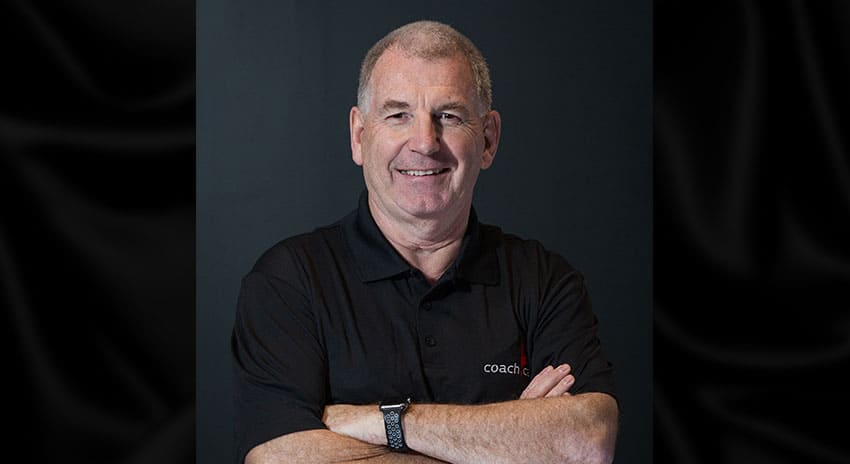
[get_current_post_author_pic_and_name]
After 35 years with Hockey Canada, Paul has seen many changes within the game. From technology changes to rule changes, Paul has definitely seen it all. However, there are things he wants to change within the sport as well. For example, Paul is adament about making hockey more accessible and inclusive. Paul works so hard and I admire that he's continuing to push for a game that can enjoyed by anyone and everyone. Hockey is Canada's game, and Paul is making magic through his incredible efforts.


